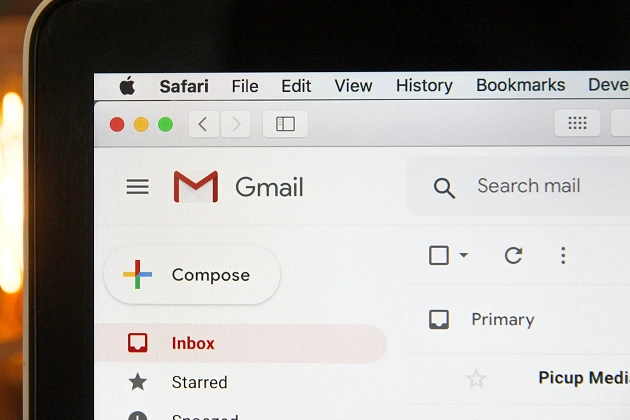You’ve undoubtedly heard that digital marketing is crucial if you’re a lawyer looking to expand your clientele. However, posting on social media or running advertisements alone is insufficient. A clear, results-driven system that guides prospective customers from initial contact to consultation and ultimately into your office is what you need. We refer to that system as a digital marketing funnel.
A well-designed funnel does more than just increase website traffic. It draws in the right people, helps you gain their trust, and encourages them to collaborate with you. Most significantly, it generates new business without squandering funds or time.
This article will show you how to design a legal services-specific high-ROI marketing funnel. This comprehensive guide will assist you in converting online interest into actual, paying clients, regardless of whether you are a solo practitioner or a member of a developing firm.
Here’s a good place to start if you’re looking for expert assistance setting this up: digital services for law firms that focus on marketing exclusively for the legal sector.
1. Understand Your Ideal Client
Take a step back before you begin building anything. Who specifically are you attempting to contact? Your ideal client is not everyone seeking legal assistance.
Determine your niche first. Do you specialize in criminal defense, immigration, estate planning, family law, or personal injury? Client behavior, urgency level, and preferred communication style vary by area.
Make a simple client profile after you’ve determined your area of expertise. Take into account their age, location, income, and the type of legal matter they are resolving. Consider their online searches, the way they discuss their issues, and the tone that reassures them.
For instance, a person seeking a divorce lawyer could experience emotional exhaustion and overwhelm. They want someone they can trust, not just legal advice. That degree of empathy must be reflected in your funnel.
2. Attract Attention with Useful, Visible Content
Now that you’ve identified your target, it’s time to attract their interest. The awareness stage is at the top of your funnel.
Search engine optimization (SEO) should come first. The majority of legal clients start by searching on Google. Compose informative blog entries addressing frequently asked questions by your clients. For instance: “What occurs in Chicago following a DUI arrest?”
- “Do I require a trust or a will?”
- “How much does hiring a divorce attorney cost?”
These posts ought to give a clear response to the query, background information, and recommendations for further action. Avoid overloading them with legalese. Talk as though you were speaking to a client on the other side of your desk.
Next, spend money on Google Ads, particularly for high-intent keywords like “free consultation DUI attorney” or “personal injury lawyer near me.” Despite their higher cost, these clicks frequently result in quicker conversions.
Social media is another tool at your disposal, but don’t limit yourself to posting legal news or firm updates. Social media strategists distribute short videos, practical advice, or behind-the-scenes material that makes your team more relatable. This fosters familiarity, which frequently serves as a springboard for trust.
3. Capture Leads with Specific, Action-Oriented Pages
A page that directly addresses their needs should be the first thing someone sees when they click through to your website. The conversion rate of generic homepages is low. Service-specific landing pages are necessary.
Suppose you practice both personal injury and immigration law. The concerns of these two clients are completely different. Every one of them should have a landing page that specifically addresses their circumstances.
Maintain the page’s focus and cleanliness. Include a succinct headline, a few sentences outlining your assistance, and a compelling call to action. “Schedule a Free Consultation” is one possible option.
- “Get Our Guide to Chicago’s Child Custody Laws”
- “Receive a Case Review in a Day”
Provide a brief form that asks for their name, phone number, email address, and perhaps a sentence describing the problem. That’s all. The simpler, the better.
4. Follow Up with Value-Driven Emails
Don’t let someone sit in silence now that you have their contact details. A lot of legal prospects take time to convert. They may be testing the waters or comparing options. Email marketing can help with this.
Create a basic email sequence. Nothing ostentatious is required. Over the next seven to ten days, a few well-written messages can help people remember your company.
This is a basic outline:
- Greetings via email Thank them for contacting you. Let them know what to anticipate.
- Educational Email: Provide a video or blog post addressing a prevalent issue.
- Provide a case study or client testimonial to demonstrate how you have assisted someone in a comparable circumstance.
- Frequently Asked Questions: Address frequently asked questions about costs, schedules, or results.
- Personal Invite: Provide a link to your calendar and urge them to arrange a consultation.
Instead of sounding salesy, the tone should be helpful and personal. Instead of promoting a product, you’re fostering trust.
5. Close the Deal with Clear, Confident Calls-to-Action
Your lead has already had several interactions with your brand. They may have received a few emails, downloaded a checklist, and read a blog post. This is the conversion stage, which is at the bottom of the funnel.
Make scheduling a consultation incredibly simple. To allow them to choose a time without having to call you back and forth, use a scheduling app like Calendly. If they would rather call, put your number in a visible place and make sure someone picks it up right away.
Retargeting ads on Google or Facebook are another way to get people to return to your website. They’re probably still thinking about you if they clicked in the past.
Provide a clear benefit in order to increase conversion. “Speak to an attorney within 24 hours,” for instance.
“Just answers, no legalese.”
“There is no obligation and the initial consultation is free.”
Don’t leave them wondering what will happen next. Be straightforward, unambiguous, and easy to follow through on.
6. Track, Measure, and Improve Your Funnel
A funnel is never finished. You must monitor your results and make adjustments over time to maintain a high return on investment.
Examine the following important metrics first:
- The price per lead
- Rate of conversion from lead to scheduled consultation
- Conversion from consultation to client
- Total return on advertising investment (ROAS)
To get a complete picture, use tools like call tracking, your CRM, and Google Analytics. Avoid guessing. Data makes it easier to see what is and is not working.
It’s possible that your landing page isn’t converting. Try a different headline. It’s possible that your email sequence is opened but not clicked. Try a variety of subject lines. Big improvements can come from little adjustments.
7. Mistakes to Avoid
Even well-established businesses make common mistakes. Here are some to stay away from:
- speaking like a lawyer rather than a human. The majority of clients are not familiar with legal jargon. Keep it simple and straightforward.
- requesting too much too soon. You’re losing people if your lead form has ten fields.
- I forgot to follow up. The majority of leads die cold—not because they were uninterested, but rather because no one followed up.
- disregarding mobile users. You are losing a significant percentage of your audience if your website is difficult to use on a mobile device.
Final Thoughts
It’s not about trends or tricks when it comes to building a high-ROI digital marketing funnel for your legal practice. It involves comprehending your client’s path, providing genuine value, and assisting them in finding the support they require.
You don’t have to become an expert in every tool or channel right away. Start with the fundamentals: understand your audience, provide helpful content, facilitate connection, and take good care of follow-up. Your funnel will grow into one of your company’s most potent resources with time and effort.
Are you prepared to begin constructing yours? Determine where your present efforts are lacking or where they fit in by outlining each step. A few minor adjustments could result in a significant increase in your clientele.
About the Author
Shara Idnay is a results-driven SEO strategist and digital marketing expert who helps businesses expand their reach and increase revenue through targeted, scalable search engine strategies.











